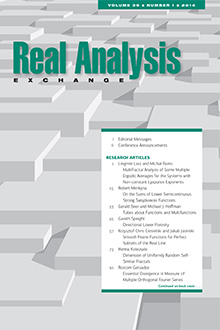Abstract
Our paper was motivated by the desire to understand to what extend the notion of sequential functions is capable to construct self-affine functions and curves. We shall prove that each self-affine curve is generated by a sequential machine. This includes not only the curves obtained by the method of M. F. Dekking but also curves produced by iterated function systems. In order to expose the relations between the construction using sequential functions and the previous established methods we introduce several types of self-affine curves. Many classical examples will be discussed to illustrate the different types of self-affinity. In the general case, the realization of the curves by means of sequential functions is based on the classical Cantor representation of the real numbers in the unit interval. The combinatorial part of Dekking’s construction, the substitution, will appear as an ingredient of the sequential machine. The geometrical part can be recovered in the consistency condition for sequential machines, which assures that a sequential machine leads to a continuous function.
Citation
Heinz-Otto Peitgen. Anna Rodenhausen. Gencho Skordev. "Self-affine curves and sequential machines." Real Anal. Exchange 22 (2) 446 - 491, 1996/1997.
Information





